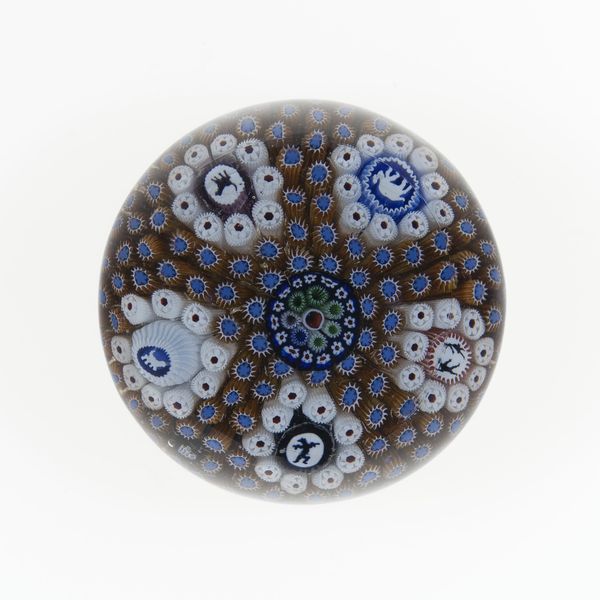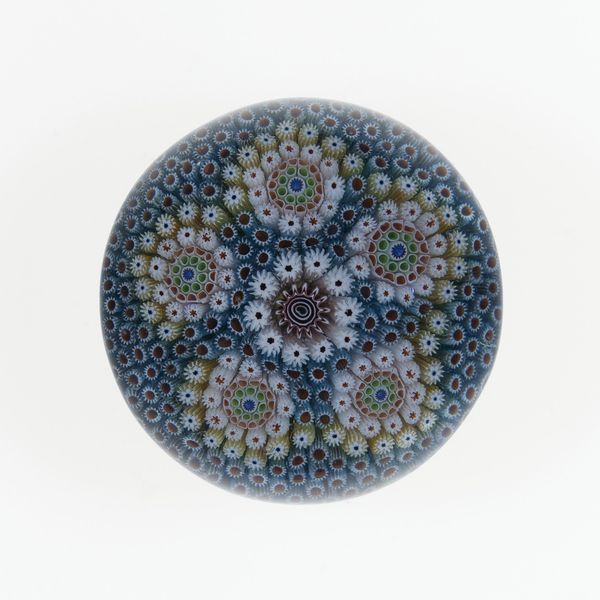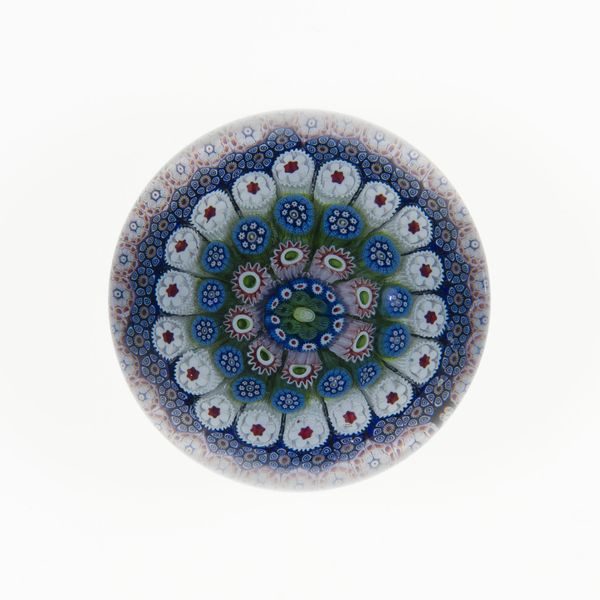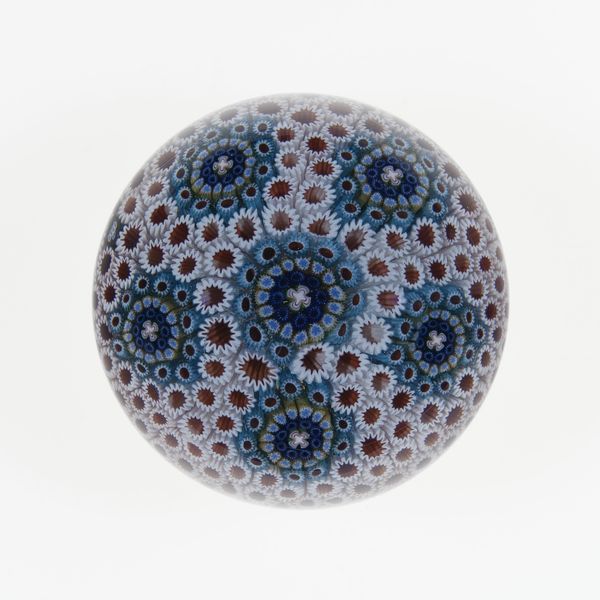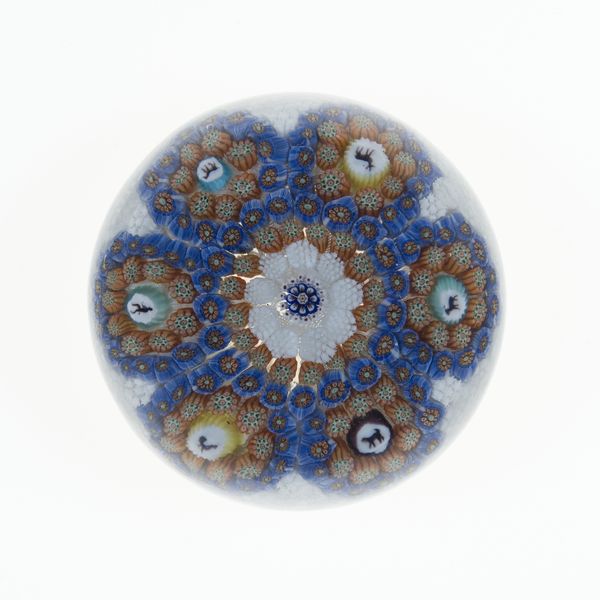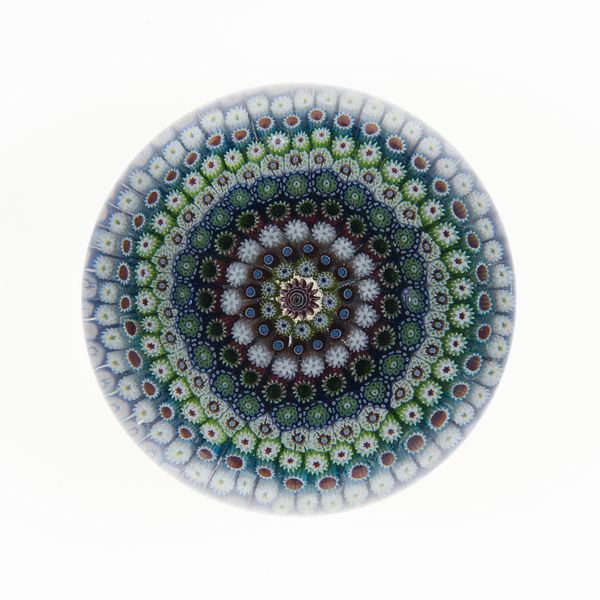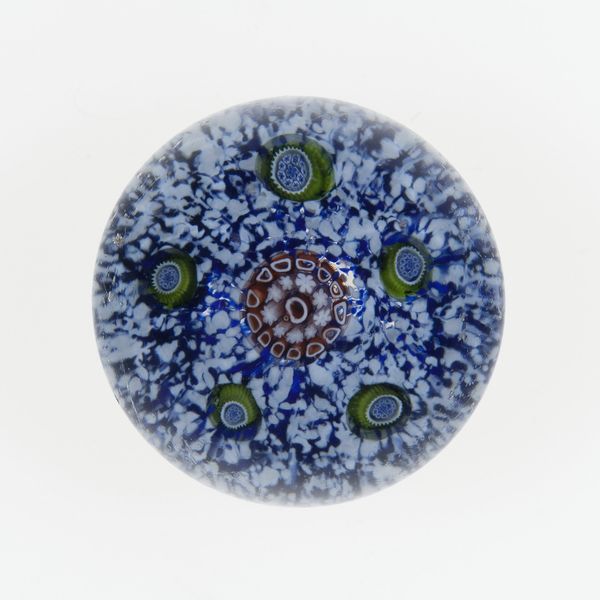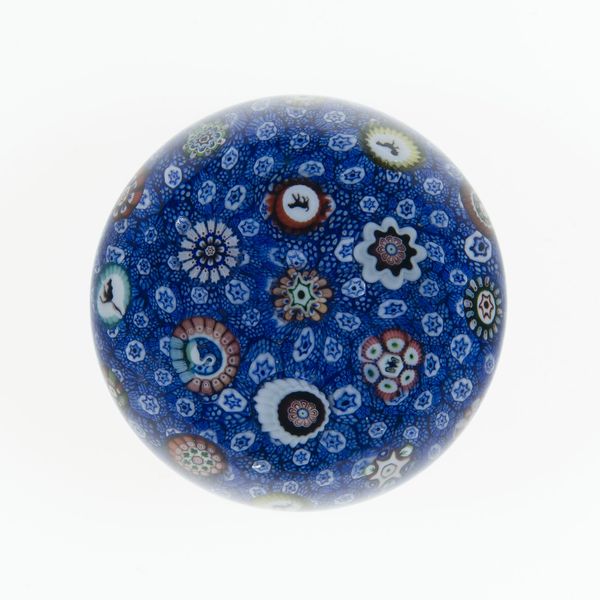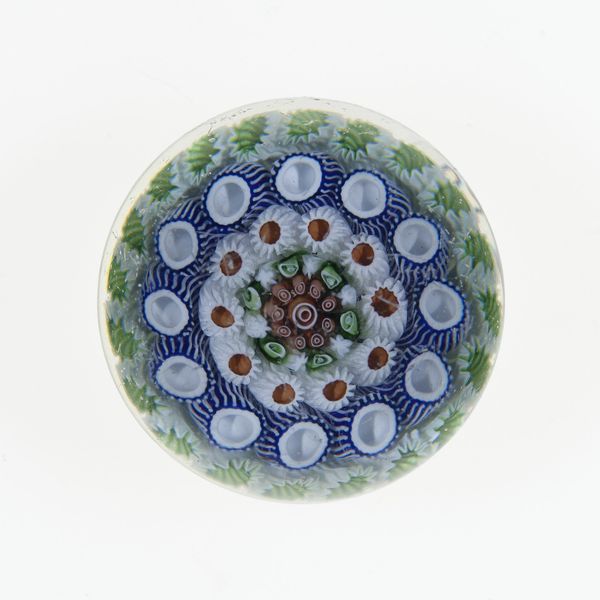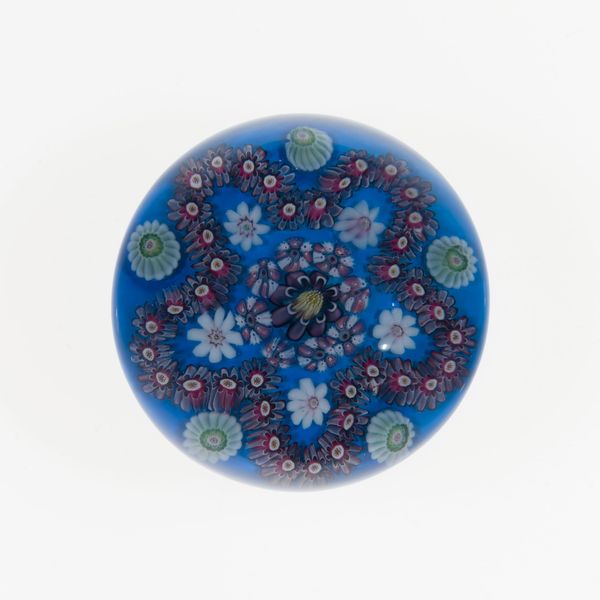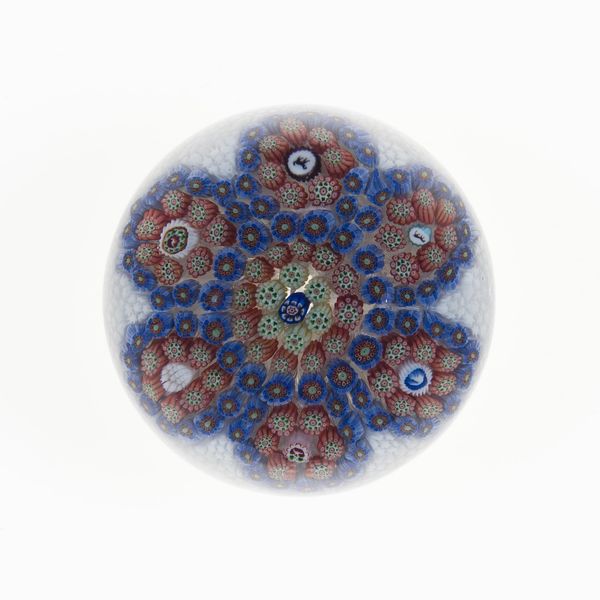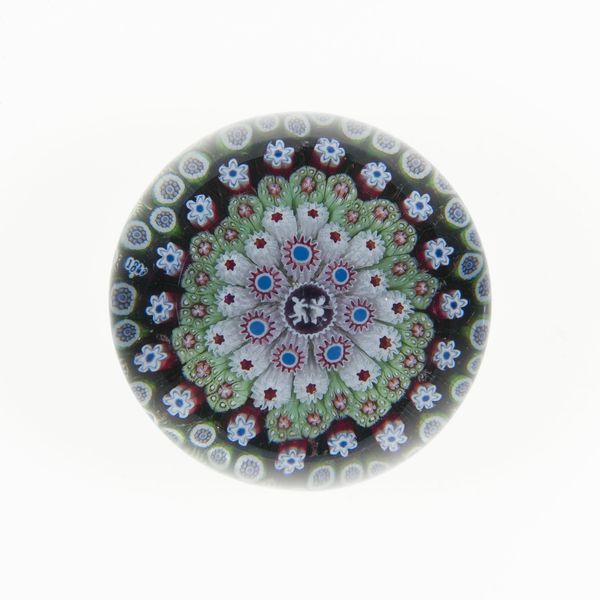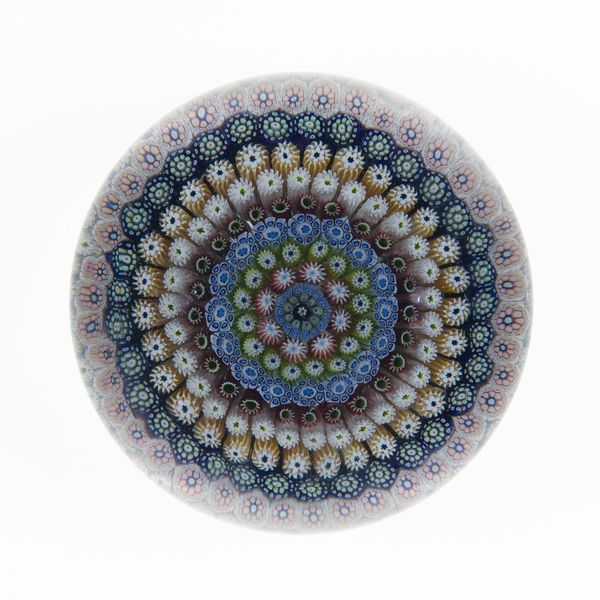
Dimensions: Diam. 6.4 cm (2 1/2 in.)
Copyright: Public Domain
Editor: This is "Paperweight," created by the Compagnie de Saint Louis, sometime between 1845 and 1860. It's crafted from glass and paper, and its intricate geometric patterns give it such a dazzling visual depth. It almost feels like you could get lost in it! How would you interpret a piece like this from a historical context? Curator: Well, the Art Nouveau aesthetic hints at its creation within a society undergoing industrial change. How did decorative arts offer an escape from the utilitarian? Consider how the rising middle class of the 19th century sought beauty and craftsmanship in their daily lives. These paperweights were not merely functional but aspirational objects, weren’t they? Editor: That's a fascinating point. I hadn’t considered it as an aspirational object before. Curator: The very act of enclosing delicate, almost ephemeral paper within solid glass suggests an effort to preserve and elevate the beauty of the fleeting. Who determined that geometric objects would make up the "flower"? It poses questions about the museum's role as a gatekeeper in deeming this beautiful. Editor: So you're saying it reflects societal desires to both hold onto beauty and create status. Looking at this paperweight now, it speaks volumes about a bygone era, its values, and even its anxieties, much more than its immediate surface appeal! Curator: Precisely! It makes me think, to what extent are decorative objects documents of cultural values? Also, how do museums help influence such beliefs? Editor: Definitely given me a lot to think about in terms of what these pieces meant for different classes and how those with authority deemed their value, thank you!
Comments
No comments
Be the first to comment and join the conversation on the ultimate creative platform.
